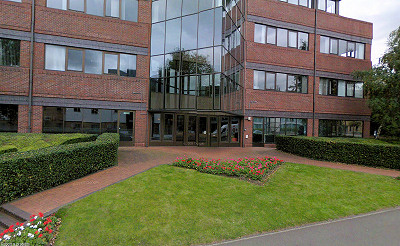
 9. Last year NetGear introduced its 'Wireless N 300 ADSL2+ Router - Mobile Broadband Edition', which combined all the usual features of a consumer router with the ability to have a Mobile Broadband failover. Has this interesting and useful combination of connectivity solutions proven to be a strong success with your sales or is it still challenging to sell hybrid routers?
9. Last year NetGear introduced its 'Wireless N 300 ADSL2+ Router - Mobile Broadband Edition', which combined all the usual features of a consumer router with the ability to have a Mobile Broadband failover. Has this interesting and useful combination of connectivity solutions proven to be a strong success with your sales or is it still challenging to sell hybrid routers?
NetGear:
We’ve actually introduced several dual WAN models. This one, the DGN2200M is presently selling worldwide, principally in Europe, North America and Australia. In Service Provider space, we’re also seeing success with our dual Ethernet & HSPA+ WAN model, the MBR1210, with Bell Mobility of Canada being an announced customer. Their deployment began in 4Q2010. We also announced the MBR1000 family’s dual Ethernet & 4G LTE WAN model, the MBR1315, with Verizon at CES in January this year.
10. Some countries are beginning to move away from the old DSL platforms and adopt new fibre optic (FTTH, FTTC etc.) based solutions. We have even seen some routers, such as BT's HomeHub3, which combined the ability to connect with both DSL and FTTC services. What kind of challenges does adapting to these new technologies represent and does NetGear plan their own FTTx/DSL consumer routers?
NetGear:
In Service provider space, it’s not so much backing away from DSL (or DOCSIS over coax) as it is building new real estate or service deployments with fiber and retrofitting large multi-tenant buildings with fiber when needed to boost capacity to keep up with escalating traffic generated by video, video conferencing and new vertical services.
The main challenge is the huge cost barrier to retrofitting copper wired customers with fiber to the premises. Roads, sidewalks, driveways and landscaping all are damaged and replacement cost is higher than customers of Service Providers want to pay. Stringing the fiber is the least of it in underground construction: in overhead, it’s much less of an issue. So to boost traffic capacity, both telcos (DSL) and cable TV operators (DOCSIS) are taking advantage of the underlying physics and economics to add speed by building fibre:
* much closer to their existing customers (few hundred meters) at a small fraction of the cost (ball park ~ 15%) that would otherwise be incurred to go all the way to all premises, delivering Internet access speeds in the range of 100 Mbps
* all the way to new premises when the development is new construction (mainly telcos)
11. Aside from IPv6 support and the issues mentioned above, what areas/new kinds of features do you expect NextGear's routers to add over the coming years?
NetGear:
US based companies are prohibited by US Securities Exchange Commission regulations from disclosing forward looking statements that may have a material impact on our financial performance.
Having said this, our direction is constant networking performance improvement and examples include such additions as these in new products:
* Powerful applications processors that enable Routers to serve as “networked computing elements” that deliver innovative new applications like DLNA/UPnP media discovery
* Dual Band WiFi: adding 5Ghz for high performance video
* Faster WANs - Gig Ethernet (connect to ONT in fiber networks), DOCSIS 3.0/EuroDOCSIS 3.0 (cable TV networks) & VDSL (from ONUs in telco networks) and 4G LTE/DC-HSPA (Mobile networks)
* Dual WAN for redundant high availability network access
END.

 9. Last year NetGear introduced its 'Wireless N 300 ADSL2+ Router - Mobile Broadband Edition', which combined all the usual features of a consumer router with the ability to have a Mobile Broadband failover. Has this interesting and useful combination of connectivity solutions proven to be a strong success with your sales or is it still challenging to sell hybrid routers?
9. Last year NetGear introduced its 'Wireless N 300 ADSL2+ Router - Mobile Broadband Edition', which combined all the usual features of a consumer router with the ability to have a Mobile Broadband failover. Has this interesting and useful combination of connectivity solutions proven to be a strong success with your sales or is it still challenging to sell hybrid routers?